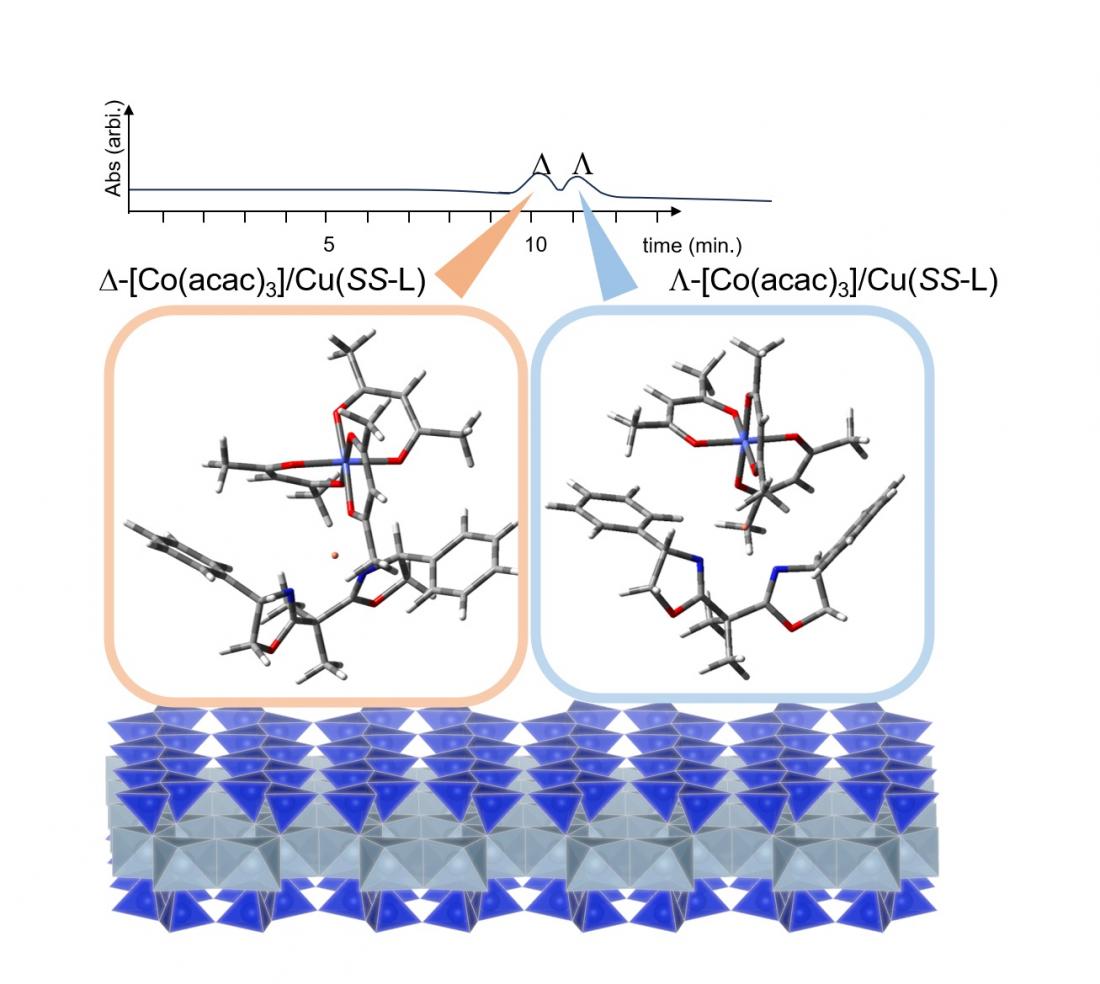Chromatographic resolution of tris (acetylacetonato) cobalt(III) on a column packed with an ion-exchange adduct of synthetic hectorite and chiral Cu(II) complex, [Cu(SS-L)]2+ (SS-L = SS-2,2′-isopropylidene-bis (4-phenyl-2-oxazoline)).
A spherically shaped particle of synthetic hectorite (denoted as Na-HEC) was ion-exchanged with a divalent Cu(II) complex, [Cu(SS-oxa)]2+ (SS-oxa = SS-2,2′-isopropylidene-bis(4-phenyl-2-oxazoline)). The material is denoted as [Cu(SS-oxa)]2+/HEC. A column for high performance liquid chromatography (HPLC) was prepared by packing 4.0 g of [Cu(SS-oxa)]2+/HEC into a stainless tube (25 cm x 0.4 cm (i.d.)). When tris(acetylacetonato)cobalt(III) (denoted as [Co(acac)3]) was eluted by methanol at the flow rate of 0.2 mLmin-1at 4oC, the compound was separated to D- and L-enantiomers nearly to the baseline. Useful organic molecules with two hydroxyl groups such as 1,1’-binaphthyl-2,2’-diol were also partially resolved. With the help of theoretical simulation, it was concluded that the resolution was achieved by the occupation of the enantiomers in a cavity around a Cu(II) ion. The column also exhibited resolution ability toward an organic molecule with two hydroxyl groups indicating that the molecule binds with a Cu(II) ion in a stereoselective way through coordinating interactions.
The results promised the practical utility of clay column chromatography for obtaining enantiomeric compounds in industries.



